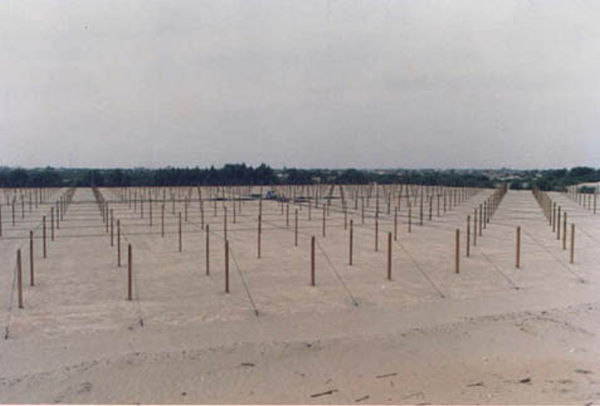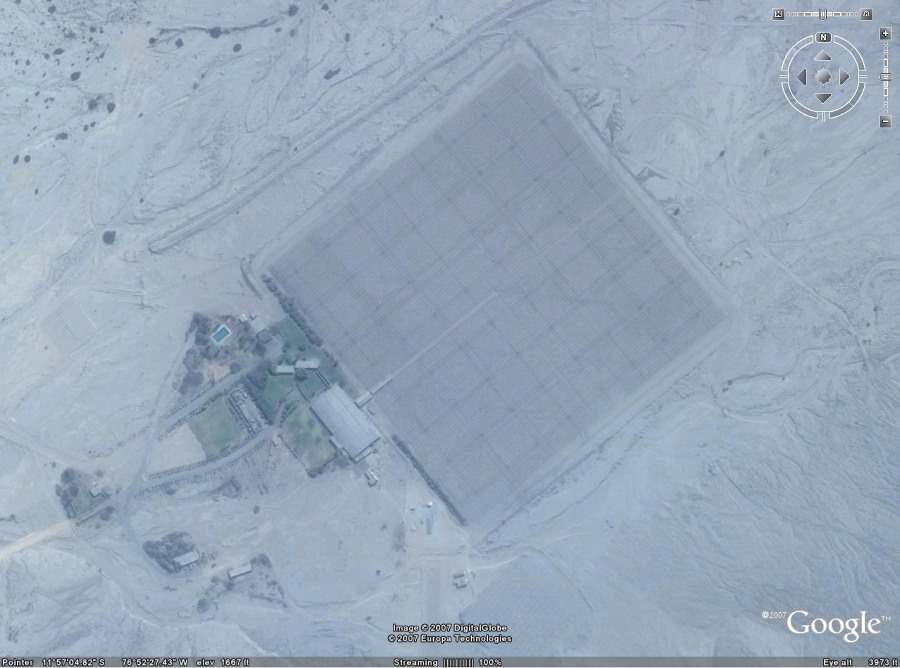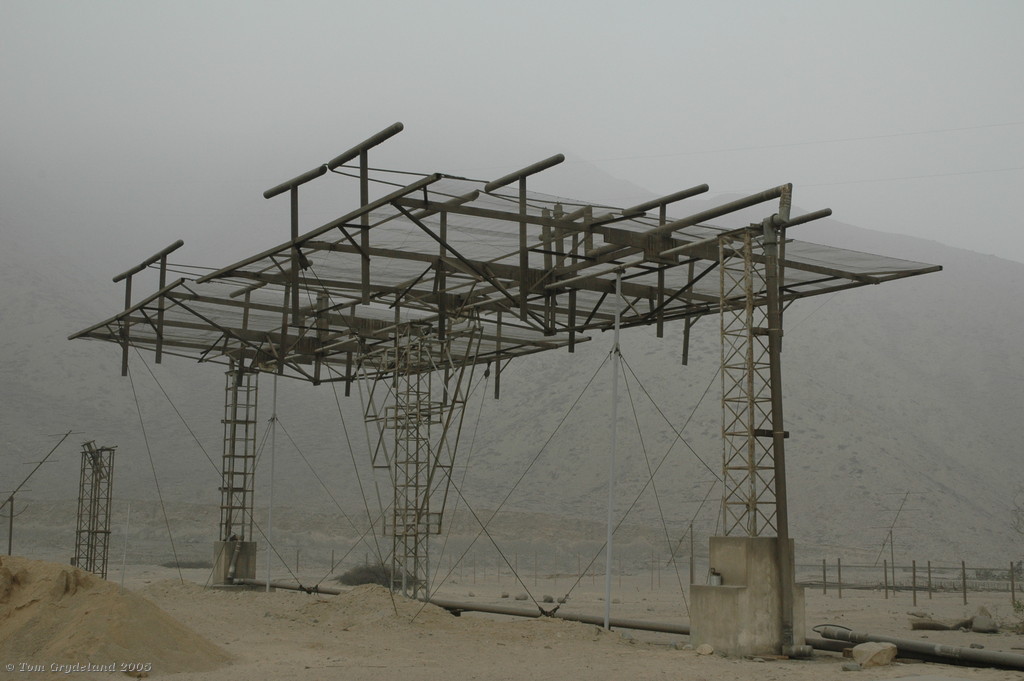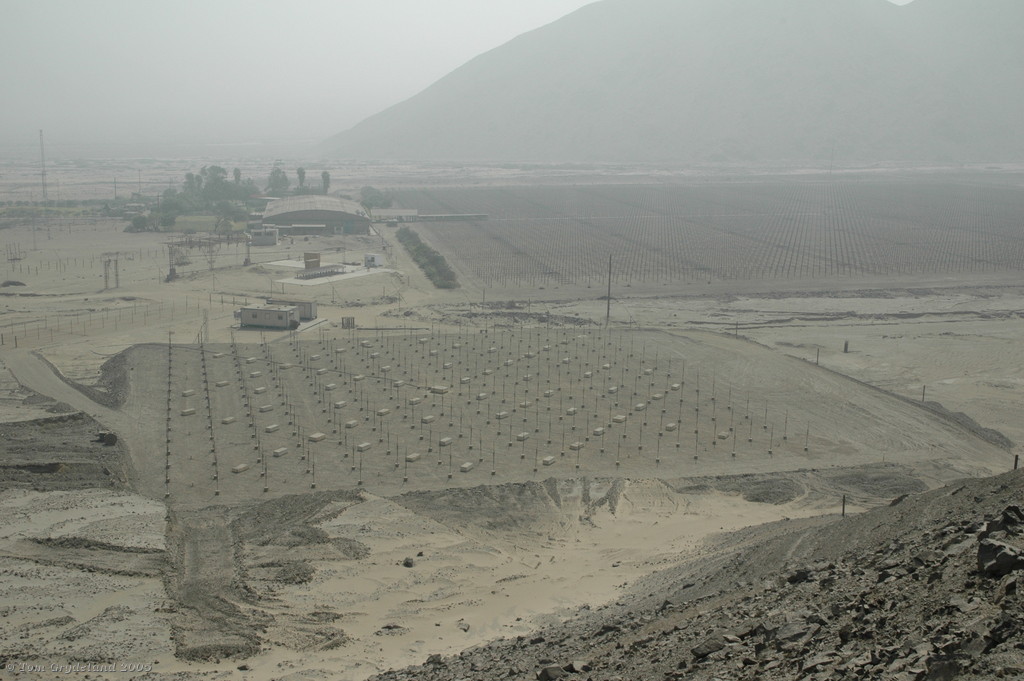|
HAARP Like Facility ..
The Jicamarca Radio Observatory is the equatorial anchor of the Western Hemisphere chain of incoherent scatter radar (ISR) observatories extending from Lima, Perú, to Søndre Strømfjord, Greenland. It is part of the Geophysical Institute of Peru (Instituto Geofísico del Perú, or IGP) and receives the majority of its financial support from the National Science Foundation of the U.S. through a Cooperative Agreement with Cornell University. The Observatory is the premier scientific facility in the world for studying the equatorial ionosphere. It has a 2-MW transmitter and a main antenna with 18,432 dipoles covering an area of nearly 85,000 square meters. |
||
| Piura facility: Jicamarca Radio
Observatory
The Observatory is about a half-hour drive inland (east) from Lima, Peru at a geographic latitude of 11.95° south and a longitude of 76.87° west. The altitude of the Observatory is about 500 m ASL. It is about 10 km from the Carretera Central, the main highway east in Peru. The Jicamarca Radio Observatory was built in 1960-61 by the Central Radio Propagation Laboratory (CRPL) of the National Bureau of Standards (NBS). |
||
The Jicamarca Radio Observatory - Cornell University The 49.92 MHz ISR is the principal facility of the Observatory. The radar antenna consists of a large square array of 18,432 half-wave dipoles arranged into 64 separate modules of 12 x 12 crossed dipoles. Each linear polarization of each module can be separately phased (by hand, changing cable lengths), and the modules can be fed separately or connected in almost any desired fashion. There is great flexibility, but changes cannot be made rapidly. The individual modules have a beam width of about 7 deg, and the array can be steered within this region by proper phasing. The one way half power beam width of the full array is about 1.1 deg; the two way (radar) half power width is about 0.8 deg. The frequency bandwidth is about 1 MHz. The isolation between the linear polarizations is very good, at least 50 dB, which is important for certain measurements. Since the array is on the ground and the Observatory is the only sign of man in a desert region completely surrounded by mountains, there is no RF interference. The transmitter consists of four completely independent modules which can be operated together or separately. Only two of these modules are currently in operation. Each can deliver ~1.5 MW peak power, with a maximum duty cycle of 6%, and pulses as short as 0.8-1.0 µs. Pulses as long as 2 ms show little power droop; considerably longer pulses are probably possible. Two additional modules with the same properties will eventually be available. The third is more than 90% complete; the fourth is well advanced but its completion will require additional funding. The drivers of the main transmitter can also be used as transmitters for applications requiring only 50- 100 KW of peak power... |
||
Coordinates 11° 57' 04.82" S 78° 52' 27.43" W |
||
|
..
The Jicamarca Radio Observatory is a facility using radars to investigate the Earth's middle and upper atmosphere and ionosphere. The main facility, a 300 by 300 metre array operating at 50 MHz or about 6 m wavelength, is shown elsewhere in my photostream. This photo shows a few of the other antenna arrays available to experimenters at the same site. The large antenna in the foreground is called the "mattress" since it resembles a spring frame bed. The horizontal netting sheet is the ground plane, while the active elements are the dipoles (the thick tubes) which are elevated from the ground plane by one half wavelength, or about 3 metres. The two halves of the antenna can be rotated separately about the axle which passes through the supporting towers. In addition, phase can be controlled separately on the two halves of the antenna, giving a rudimentary beam shaping capability. |
||
|
..
|
||
|
..
The 50 MHz MST radar right next to the main array of Jicamarca (seen in the background) |
||
| FAIR USE NOTICE: This page contains copyrighted material the use of which has not been specifically authorized by the copyright owner. Pegasus Research Consortium distributes this material without profit to those who have expressed a prior interest in receiving the included information for research and educational purposes. We believe this constitutes a fair use of any such copyrighted material as provided for in 17 U.S.C § 107. If you wish to use copyrighted material from this site for purposes of your own that go beyond fair use, you must obtain permission from the copyright owner. | ||
|
|







